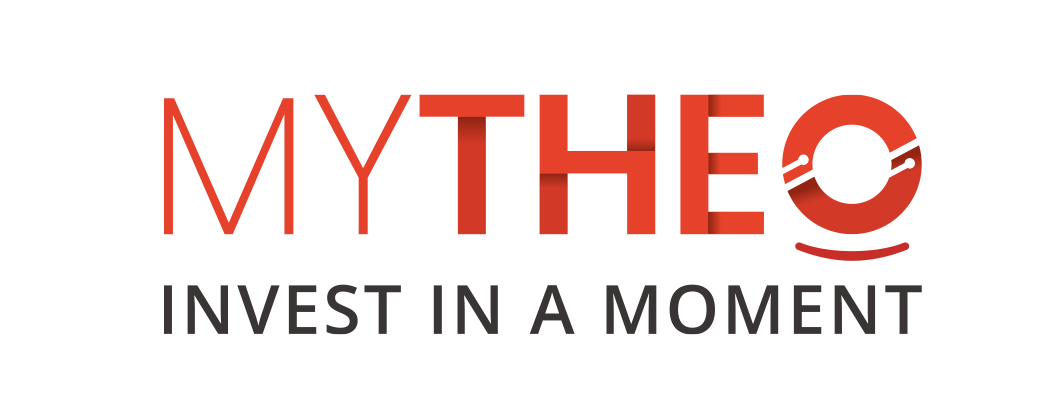Thursday, 12 March 2020
Written by Amirudin Hamid, Portfolio Manager of GAX MD

Global market performance started strong in February but dropped dramatically during the final week of the month due to the hike of coronavirus (COVID-19) cases outside China, particularly in Australia, Italy, Iran and South Korea.
MYTHEO’s Growth and Inflation Hedge portfolios were negatively affected by the level of fear in the financial market with substantial dips of 6.53% and 2.60% respectively. However, the Income portfolio had a positive performance of 3.44% driven by a larger demand for safer bonds.
Chart 1: Functional Portfolios’ Performances for the month of February 2020

Note: Past performance is not an indication of future performance
The GROWTH portfolio dropped by 6.53% in MYR
The month of February had a fantastic start with global markets rebounding from the sell-off in January. The US markets set the pace once again, riding higher and climbed to an all-time high by the middle of the month.
Unfortunately, all that changed at the end of the month after data had shown that the coronavirus cases were multiplying outside of China. From that point onwards, a new round of market correction started and quite unexpectedly, the developed markets were hit harder, especially the United Kingdom (UK) and the United States (US).
iShares MSCI UK (EWU) fell by 7.67%. Meanwhile, all three ETFs with US market exposure in the Growth portfolio: Vanguard Value ETF (VTV), iShares Russel Mid-Cap Value ETF (IWS) and iShares Russel 2000 Value ETF (IWN) dropped by 7.14%, 7.22% and 7.03% respectively.
Before the drop, VTV traded at USD121.44 on 12th February and IWS was priced at USD96.81 on 20th February, which were new all-time highs for both ETFs.
Nine out of ten ETFs inside the Growth portfolio performed poorly. The sole survivor was iShares MSCI Hong Kong (HK) which added 3.10%, most likely due to the reduced number of new COVID-19 cases in China.
The INCOME portfolio rose by 3.44% in MYR
The bonds market has been strong since the start of the year and it got even better in February. The trades for safety grew bigger and compounded more demand for government bonds or treasuries as well as high-quality corporate bonds.
Within the Income portfolio, iShares 20+ Year Treasury Bond ETF (TLT) went up by 9.67% and was the best performing ETF across all functional portfolios for the second month in row. Another US treasury ETF, Vanguard Intermediate-term Treasury Index Fund ETF (VGIT) shot up by 4.99%.
Meanwhile, the corporate holdings - iShares iBoxx Investment Grade Corporate Bond (LQD) appreciated by 3.98%. TLT, VGIT and LQD were all traded at new record high in February.
The INFLATION HEDGE portfolio down by 2.60% in MYR
Invesco DB Oil ETF (DBO) had another inferior month after a further 8.02% decline in market value. The energy demand was still below the normalized level in China as the economy was still in lock down. However, once economic activities start to pick up, we can expect the demand for crude oil to resume and that should provide support to energy-related assets.
The infrastructure and real estate ETFs, iShares Global Infrastructure (IGF) and iShares US Real Estate were down by 6.39% and 4.94% due to high correlation of both assets with the equity market.
There were a few positive spots inside the Inflation Hedge portfolio. Defensive assets performed better, such as, iShares Gold ETFs (IAU) which rose by 2.1% and traded above US$15, the level which was last seen in April 2013. Similarly, iShares Tips bond (TIP) rose by 3.8% and was valued at US$121.35, the highest ever since May 2013.
Chart 2: Summary of Performance YTD as at 28 February 2020

Note: Past performance is not an indication of future performance
Chart 2 above shows the performance of the functional portfolio since the beginning of 2020. Growth portfolio registered a return of -9.05%, Income portfolio was up by 4.91% and Inflation Hedge portfolio dropped by 3.91%.
It must be noted that, the actual portfolio returns to the investors is the combined weighted return from the allocation to each functional portfolio. For example, if an investor allocates the investment equally: 33.3% in Growth, 33.3% in Income and 33.3% in Inflation Hedge, the actual portfolio return is (33.3% x -9.05%) + (33.3% x 4.91%) + (33.3% x -3.91%) = -3.01% over a two-month period from January to February 2020.
What’s Happening In The World Market?
In the beginning, February was filled with positive performances. Investors were so confident that COVID-19 had already peaked after fewer new cases were reported in China. On 6th February, China created more excitement in the market by announcing the move to halve the tariff on US$76 billion of imports from the US.
As market sentiment shifted for the better, it didn’t take long before the global market once again raced higher. As always, the US market received most of the interests. In mid-February, all the three major equity indicators in the US: Dow Jones Index, S&P 500 Index and Nasdaq Index broke a record high.
However, negative sentiments started in the final week of the month. The financial market made a reversal after South Korea, Iran and Italy reported a significant hike in new cases of COVID-19. The correction was so steep and is highlighted as the quickest US stock market correction in history.
Chart 3: Time Taken for S&P 500 to correct 10% from the peak

A large loss to the equity market is a boon to the bond market. When market sentiments run wild, the trade for safety unfolds and investors start buying more high-quality bonds. As a result, the bond yields were down to a fresh new historic low. At the end of February, the US 10-year treasury bond yields was trading at 1.096% and the 30-year treasury was trading at 1.645%.
The treasury market is a reliable indicator of the future direction of US interest rate. Lower yields mean the market is betting that the Federal Reserve will lower the interest rate in the near future. That’s what exactly happened on 3rd March 2020, when the Federal Reserve announced to cut the interest rate by 0.50% to only 1.25%.
The Federal Reserve was not the first to do so. The People’s Bank of China (PBOC) cut the one-year loan prime rate from 4.15% to 4.05% and the five-year rate from 4.80% to 4.75% on 20th February 2020. At home, Bank Negara Malaysia (BNM) also cut the interest rate twice this year, 0.25% each in February and in early March.
We expect policymakers and central banks to be accommodative and to activate loosening policies to protect the economy from the potential negative impact of the COVID-19 pandemic.
International Monetary Fund (IMF), in its outlook report published in February, estimated that COVID-19 would likely cut 0.1% from global growth in 2020. The organization has also lowered China's economic growth forecast by 0.40% to 5.60%.
Despite the downgrade, IMF expects COVID-19 to have a relatively minor impact on the global economy and to be limited only to the first quarter of 2020. The organization believes that the global economy would return to normal growth when the activities in China start picking up in the second quarter of the year.
Our Thoughts
FEAR is the perfect word to describe investors’ emotion during the final week of February, as indicated by the “Fear” or VIX Index.
The Index is derived from the movement of the S&P 500 Index options. It is a useful indicator to measure the level of “fear” among investors and is closely followed by professional investors. The Index moves up whenever the market “fear” deepens and moves down whenever the market feels relief from the “fear.”
At the end of February, the index leveled at 40.11 points. It was the fourth time that it has surpassed 40 points post the financial crisis in 2008. On normal trading days, the Index usually trades between 10 to 15 points. At times when there is bad news, the fear Index spikes up to above 20 points. However, when the index hits above 40 points, it might indicate that the market “fear” has already hit an extreme and is unlikely to sustain, and financial markets are more likely to rebound from this level.
Chart 4: Major Black Swan Events and VIX Index from 2010 to 2020

Chart 5: Major Black Swan Events and MSCI World Index 2010 to 2020

When the VIX Index hit 40 points on 3 separate occasions in the past, it always signaled that the market fear has overblown and the market has rebounded. There were times that the market rebounded even before the Index hit 40 points; this occurred during the market sell-off at the height of the US tightening cycle due to inflationary pressure in February 2018 and the escalation between the US and China trade war in December 2018.
The VIX Index is useful and makes it possible for investors to gauge the current level of “fear” in the market. When the VIX Index level is too high, it means that negative news have swayed market sentiments. At this point, it is not advisable for investors to exit from their investments.
VIX Index momentum is one of the many factors embedded in the MYTHEO algorithm used for strategic portfolio allocation. In our “Omakase” or “Leave it to MYTHEO” mode, MYTHEO will automatically rebalance and optimise investors’ portfolio by diversifying the asset classes in over 86 countries.
We advise investors to stay calm, to continue investing consistently and to make use of our regular savings plan.
NOTE:
Comments on the performance and operational status of each functional portfolio above are from our model portfolio throughout the month. MYTHEO customer’s personalized portfolio is derived from the combined weight of each portfolio. Therefore, the actual portfolio performance to the client is dependent on the weightage of each portfolio. The actual personalized return to each client can be calculated using this formula:
Return of Personalised portfolio = (Weightage in Growth portfolio x Return of Growth portfolio) + (Weightage in Income portfolio x Return of Income portfolio) + (Weightage in Growth portfolio x Return of Inflation Hedge portfolio).



